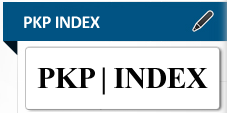Identification of Volcanic Breccia Formation Distribution in Relation to Groundwater Aquifer Potential Using 3D Resistivity Data Modelling
Abstract
Electrical resistivity tomography (ERT) method has been widely used in environmental surveys including hydrogeology study to provide images of the subsurface resistivity distribution. In this study, ERT survey using Wenner - Schlumberger electrode configuration was conducted to investigate the distribution of groundwater aquifer potential in the area dominated by various weathered volcanic rocks that unconformably overlaid limestone formation. The resistivities were measured using ARES resistivity meter each with total of 48 electrodes. The resistivity data were then processed using the robust inversion method that is more optimal to characterize sharp lithological boundary transitions observed in the study area. The resistivity value of the inverted model is interpreted into three different lithologies, namely soil (1.82-5 Ωm), volcanic breccias (5-20 Ωm) and limestone (>20 Ωm). This lithological interpretation was confirmed by borehole cutting report from the nearby well, regional geological map, and direct geological observation. Further, the inverted ERT section along with geological observation indicated volcanic breccias as an aquifer potential in the study area. The 2D resistivity cross-section is then gridded to obtain a 3D model of the potential aquifer geometry. From the model, the volume of volcanic breccia which is suspected as an potential aquifer layer is estimated at 122,392,828 m3.
Keywords
Full Text:
PDFDOI: http://dx.doi.org/10.34126/jlbg.v14i3.484
Refbacks
- There are currently no refbacks.

This work is licensed under a Creative Commons Attribution-NonCommercial 4.0 International License.









